#まわり (producer)
Explore tagged Tumblr posts
Text
youtube
#daily voca recs#vocal synth#mawari (producer)#まわり (producer)#natsuki karin (vocal)#hanakuma chifuyu (vocal)#EN subtitles available#synthesizer v#synthv#(There’s a bright and dazzling quality to Mawari’s music I just adore ☺️)#Youtube
3 notes
·
View notes
Text
Preview of New Lore Document (And my own extrapolations on it!)👀

To be discussed at length in yet another Youtube interview Director Nakamura and producer Shoji to be released this Saturday!
Transcript and Google auto translations of the doc, as well as my thoughts are below the cut. @sarahwatchesthings This might be an interesting one for you to sink your teeth into!
📜Transcript
-怪 続編アイデアメモー 3) 蒐我の峰(しゅうがのみね) 【全ての物が、産まれてくる座、全てのものが還るべき座 古代よりさまざまな宗教によって、「神」とあらわされる根源の座 全知がそこにはあり、あまたの聖人たちが「瞑想」などによって「写し世」にいながらにして触れよう、近 づこうとした物、そのもの。 「 心理学者のユングが言うところの「集合的無意識」であり、預言者たちがアクセスする「アカシックレコー ド」であり、仏教でいう彼岸の知恵 「般若」(はんにゃ)ともいわれています。 時間」もたたみ込まれているため、宇宙の始まりから終焉まで、全てがそこにはあります。 「蒐我」を知るということが、人間にとっての「悟り」であり、仏教でいう「明心見性」(みょうしんけん しょう)と同じ意味を成します。 そこには、写し世との距離(実際には距離というものは存在しないが、便宜上わかりやすくそう言われてい )をはかる深さの概念があり、一業目、二業目(いちごうめ、にごうめ)と数えられます。 数が増えるほど、深く業に沈んでいる事となり、人間でいえば、深く死んでいる、より偏在化している状態 となります(正常な状態)。 人は、死を迎えると、ゆっくりと蒐我へと沈んでいく旅にでるのです。
📝Translation
Kai Sequel Idea Memo 3) The Peak of the Collected Self [The seat from which all things are born, the seat to which all things return. The seat of the origin, which has been expressed as "God" by various religions since ancient times. Omniscience resides there, and it is the very thing that many saints have tried to touch and approach while living in the "duplicate world" through "meditation" and other practices. It is what psychologist Jung calls the "collective unconscious," the "Akashic Records" that prophets access, and is also called "Hannya," the wisdom of the other shore in Buddhism. Time is also folded in, so everything from the beginning to the end of the universe is there. Knowing "the self" is "enlightenment" for humans, and has the same meaning as "clearing one's mind and seeing one's true nature" in Buddhism. There is a concept of depth that measures the distance from the world of reflection (in reality there is no such thing as distance, but it is referred to as such for convenience and clarity), and it is counted as the first karma, the second karma (ichigoume, nigoume). The more the number, the deeper one is sunk into karma, which would be like being deeply dead and in a more decentralized state in human terms (the normal state). When a person approaches death, they embark on a journey that slowly sinks them into the self.
🧠My Thoughts
So we finally get some much-needed context as what this realm of Shuuga (蒐我) is like. As a refresher, the previously published lore document says that the medicine seller's headquarters, called the Jyu-Yoku (じゅうよく) resides unevenly between the human world and this Shuuga in a state of perpetual non-existence and existence– Schrödinger's cat is a rather apt metaphor for it.
Based on my (rather sleep deprived) ramblings about the Asian philosophy of the universe which the hexagram paradigm resides in, I believe that Shuuga is part of the broader realm of Mukyoku (無極) which is the primordial zero which all of existence originates from.
From here, I form another hypothesis. Kusuriuri stated in the Umibozu arc that he fears is (according to fan subtitles) "the knowledge that the edge of this world exists without Form, Truth, or Regret." Whether that describes the Shuuga or Mukyoku, I believe this may be a reason why he may be reluctant to make trips to the Jyu-Yoku headquarters.
His journeys in the human world are always driven by the pursuit of knowledge to purify Mononoke from that realm. In a place like Shuuga, where all of existence and non existence and time coalesce into pure omniscience, his purpose for existing, and thus his physical form, would be utterly eradicated.
So he is very human in that he wants to keep his individuality and not become just one small drop in the collective unconsciousness and/or hivemind that I'm beginning to think the Jyu-Yoku "headquarters" is a manifestation of.
There are probably hundreds of other entities similar to medicine sellers residing there, but only the ones who earn the right to wield one of the 64 exorcism swords have the privilege of getting personhood and freedom to roam the mortal realm.
But even then, only a handful of these swords are "on duty" at a time depending on the state of the world. I bet becoming a wielder of one of the 8 the powerful trigram swords is a much coveted position, because they are the most likely weapons to be deployed into the human world, and thus the key to freedom from the Jyu-Yoku.
In the transformation sequences, we see Hyper and Kusu exist in a strange pocket dimension between the grounded human world and fantastical mononoke domain. Thus, I believe the key to entering and exiting the Jyu-Yoku's liminal space is the exorcism sword (though I imagine clever entities that know what to look for can become a stowaways/hitchhikers in the brief window of time when that gateway's opened).
Thus, the existence of all medicine sellers is rather contradictory. While they seek knowledge to eradicate mononoke from the world, their existence in the human realm simultaneously confirms that they are actively running away from an enlightenment which they can easily access should they return to Jyu-Yoku.
This level of enlightenment is embodied by the exorcism sword - how else can it know when to clank its teeth when a medicine seller correctly deduces a Form, Truth, or Regret?
Medicine sellers are the walking embodiments of the individual valuing their sense of self over the more efficient collective. Why else would you do something as impractical as picking off one mononoke at a time, when you can effectively exorcise the lot of them from Jyu-Yoku?
Let's consider this from a different perspective. In the Jyu-Yoku, I imagine it is all-too-easy to fall into the trap of looking at the "bigger picture" and let the "lesser" issues of insignificant individuals fall on the wayside.
Those who become medicine sellers feel compassion for the entities that fall below the notice of the Jyu-Yoku. Although there are much bigger forces at play in the universe, these "trivial" pockets of suffering, left unchecked, can grow into something much more dangerous: mononoke.
If the entire universe is represented by the human body, the Jyu-Yoku could be considered the immune system. It works with the intricate internal workings of the body which goes through the endless cycle of cell death and regeneration. In theory, it should be self-sustaining.
The medicine sellers, by comparison, are quite literally that: the peddlers of medicine that the body consumes or uses to expedite the healing of superficial injuries or illnesses that with time, the Jyu-Yoku could have eventually taken care of.
Or perhaps a better metaphor for the Medicine Seller is vaccines - they collect knowledge of the pathogens (the mononoke) which are rendered mostly inert (purification via exorcism sword) to train the body (Jyu-Yoku) how to better combat it. And like vaccination development in the real world, it's a never ending task ensuring that it is capable combating the evolving sicknesses of the world.
Anyways, thank you for attending yet another one of my Mononoke TED talks!
90 notes
·
View notes
Text
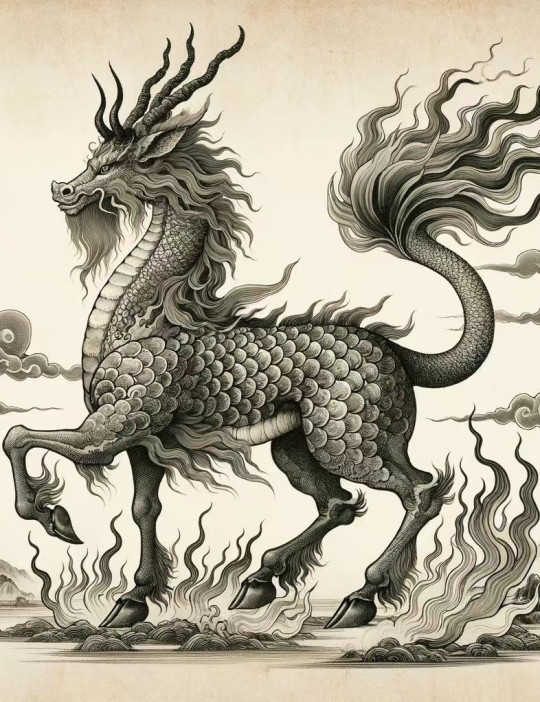
[Image above: Qilin, a legendary hoofed chimeric creature of Chinese mythology that is have been born from Yinglong]
Legends of the humanoids
Reptilian humanoids (7)
Yinglong - Winged Dragon, God of Rain in Chinese mythology
Yinglong (lit. 'responsive dragon') is a dragon that belonged directly to the Yellow Emperor (reign dates: 2697–2597 or 2698–2598 BCE), with four legs, bat- or falcon-like wings and three claws on each foot. It is allowed to access between heaven and earth. It also has the ability to store water and make it rain.
Yinglong is the chief of of the four dragons are the Azure, Red, White and Black dragons, and is said to give birth to the Heavenly Horse (Qilin), and become Yellow Dragon in old age. The Yellow Dragon is located in the middle of the Five Dragon King (Ref), is a part of Wuxing & the Four Symbols (Ref2) as the embodiment of the element of earth.
The (2nd century BCE) Huainanzi uses Yinglong in three chapters. "Forms of Earth" (Chapter 4) explains how animal evolution originated through dragons, with Yinglong as the progenitor of quadrupeds.
“All creatures, winged, hairy, scaly and mailed, find their origin in the dragon. The yu-kia (founder of birds) produced the flying dragon, the flying dragon gave birth to the phoenixes, and after them the luan-niao and all birds, in general the winged beings, were born successively. The mao-tuh ("hairy calf") produced the ying-lung the ying-lung (yinglong) gave birth to the kien-ma (heavenly horse), and afterwards the qilin and all quadrupeds, in general the hairy beings, were born successively. …”
Qilin are a type of legendary animal in Chinese mythology. They resemble deer in appearance, are large, standing 5 m ( approx. 16 ft) tall, and are unicorns with a face resembling a dragon, a bull's tail and horse's hooves, and qilin horns. Its back is five-coloured, its fur is yellow and it has scales on its body.

伝説のヒューマノイドたち
ヒト型爬虫類 (7)
応龍 〜 中国神話に登場する雨の神、翼のある龍
応龍 (インロン: “反応するドラゴン“の意) は、帝王である黄帝 (在位: 紀元前2697〜2597年または2698〜2598年) に直属する龍で、4本足で蝙蝠ないし鷹のような翼、足に3本の爪を持つ。天と地の間を行き来することができる。また、水を貯めて雨を降らせる��力もある。
応龍は、四龍の長あり、天馬 (麒麟) を生み、老いて黄龍になると言われている。
黄龍とは五方龍王(参照)の中央に位置しており、尚且つ四神 (四獣) の中心的存在、四神が東西南北の守護獣なのに対し、中央を守るとされる。土の要素を体現するものとして、五行思想と四神(参照2)の一部である。
紀元前2世紀の『淮南子』は、3つの章で応龍が使われている。 “地の形” (巻四地形訓) では、動物の進化が龍を通じてどのように起こったかを説明し、四足歩行の始祖は応龍であるとしている。
“翼のあるもの、毛のあるもの、鱗のあるもの、甲殻のあるもの、すべての生き物は龍に起源を持つ。羽嘉(うか: 鳥類の始祖) は飛竜を生み、飛竜は鳳凰を生み、その後に鸞鳥とすべての鳥類、一般的には翼を持つ生き物が次々と生まれた。毛犢 (もうとく: 獣類の始祖)は応龍を生み、応龍は天馬を生み、その後、麒麟とすべての四足動物、一般的には毛の生えた生き物が次々と生まれた。...“
麒麟とは、中国神話に現れる伝説上の動物の一種である。形は鹿に似て大きく背丈は5m あり、顔は龍に似て、牛の尾と馬の蹄をもち、麒角の一角生獣。背毛は五色に彩られ、毛は黄色く、身体には鱗がある。
#yinglong#yellow dragon#chinese mythology#qilin#yin yang#legendary creatures#hybrids#hybrid beasts#cryptids#therianthropy#legend#mythology#folklore#s.f.#nature#art
153 notes
·
View notes
Text
Random advanced vocab/phrases from FF7 Remake (Turks Cutscenes)

待ち伏せ(まちぶせ)ambush, lying in wait for an ambush
見掛け倒���(みかけだおし)all show and no substance
思った通りだな… タークスなんて見掛け倒し
元も子もない(もともこもない)losing everything, suffering a total loss, coming to nothing
おい、あんま飛ばし過ぎんなよ!今やちまったら元も子も…
上出来(じょうでき)good performance, good work, great success
「こんな感じでいっかぁ?」 「まぁ、上出来だ」
極悪非道(ごくあくひどう)inhuman, heinous, atrocious
投降(とうこう)surrender
あきらめて投降しろ、極悪非道のアバランチ!
別件(べっけん)separate case, another matter
別件がはいた。あとは任せたぞ
決着(けっちゃく)conclusion, decision, end, settlement
そろそろ決着つけようぜ〜?
齎す(もたらす)to bring about, to cause, to produce
君たちの活動が巡り巡って我々に古代種をもたらしたというわけだ
言い伝え(いいつたえ)tradition, legend
比喩(ひゆ)simile, metaphor, allegory, parable
言い伝え何かの比喩、いろいろな見解があります
文字通り(もじどおり)literally, to the letter
しかし我々文字通りの真実としてそれを信じています。
Turks cutscenes (Japanese audio + subtitles)
#nutcracker nihongo#shiny object spotted#japanese#japanese langblr#japanese vocab#learning japanese#ff7#ff7 remake#ff7 turks
16 notes
·
View notes
Text
Article Title: プリキュアの“恋愛描写”は20年間でどう変わった? 「彼氏」すら表現できなかったプリキュアがわんぷりで「カップル誕生」を描けるまでに至った理由
What has changed in 20 years of Precure's depictions of romance? Reasons behind the change from seasons that couldn't include boyfriends to the birth of a couple in Wonderful Precure
Some basic summary of this post written by Kasumi, the guy who keeps track of Precure sales and makes handy graphs and whatnot.
The beginning of this article is summary of Wonderful Precure's Satoiro developments.
Later in the article, there's some quotes from Narita. Summarized: After the first few seasons, the response they got from parents was that they would prefer not to have romance because the girls watching this were like 3, 4 years old. So it was a taboo to write about romantic relationships.
The first few seasons were about falling in love with older boys shoujo manga-style, then we have Fresh's whole "I'm not telling you my answer" ending.
In Happiness Charge Narita was uncertain about whether they should do romance as one of the main themes but Nagamine wanted to go for it. So they did a love triangle as one of the main writing setups. Narita still asked multiple times if it was okay to write what she was writing. When Megumi lost in love at the end of the series it became a big topic.
After Happiness Charge they took a step back again and romance barely features besides crushes that don't go anywhere.
This changed in Hugtto when Homare gets turned down by Harry, and Hana's whole thing with George (aka her future schrodinger's evil husband).
None of these depictions are like focused on romance as something that actually leads to a mutual, intentional relationship.
Tropirouge was made specifically to have 0 romance
Black Pepper was created with the idea that he was supposed to work with the girls to save each other rather than just saving them from a pinch. His feelings were only written in to add a bit of spice to the show. But he signals a shift from possible love interests being a prince you admire to a partner that fights with you.
Every season that has served as a turning point in Precure's depiction of romance has had Narita in charge of series composition (Happiness Charge, Otona, and Wonderful).
Article mentions that while before it was unthinkable for idols and actors to have romantic partners, in the 2020 era it's become more normal for actors and TV talent to declare that they're dating and for idols to continue their idol work while being married.
プリキュアでも、かつては「コクる」「彼氏」という言葉1つだけでも保護者から大ブーイングだった時代がありました。
In Precure as well, there was an era where the words "confession" or "boyfriend" were met with loud booing from guardians.
But the times and mindsets have changed so now we have a married Precure and a Precure with a boyfriend.
梅澤 実は大ブーイングでした。「コクる」「彼氏」というセリフも評判が悪かったです。中学生だから、必然性があるから、大丈夫というわけじゃない。両親が観せたくない作品になっては『プリキュア』じゃない、と痛感しました。 ぴあ『プリキュアぴあ』(P87)
This quote is basically what was just summarized above. In addition to the booing thing, Umezawa (producer for Fresh, Heartcatch, Suite) says that he realized that if they wrote things that parents wouldn't want to show their kids then it wouldn't be Precure
So I guess parent opposition is indeed a big reason why they've been avoiding romance. But nowadays:
Satoiro has been massively popular with elementary school girls.
The target range for Precure has risen now also with the cosmetics and the like, ranging from elementary schoolers to young women.
We should expect to see more depictions of romantic love in Precure in the future.
"Change is Precure's strong point."
33 notes
·
View notes
Text
富山県
Japanese Prefectures: Chūbu - Toyama
都道府県 (とどうふけん) - Prefectures of Japan
Learning the kanji and a little bit about each of Japan’s 47 prefectures!
Kanji・漢字
富 と(む)、とみ、フ、フウ wealth, enrich, abundant
山 やま、サン、セン mountain
県 ケン prefecture
中部 ちゅうぶ Chūbu, Central Japan, the central region of Japan
Prefectural Capital (県庁所在地) : Toyama (富山市)

Toyama Prefecture is a part of the central region of Japan, also known as Hokuriku (北陸). Takaoka city is the birthplace of Fujiko F. Fujio, the creator of Doraemon, with many Doraemon-themed delights for visitors. Toyama lies along the Sea of Japan and includes part of the spectacular Northern Japan Alps. Gourmet seafood, idyllic scenery, cultural attractions, and a slower pace are all easily accessible by shinkansen from Tokyo, Kyoto, and Osaka. Toyama is an important rice-producing area, as well as sourcing hydroelectric power and minerals from the nearby mountains that serve as a basis for chemical, textile, machinery, pulp and paper, and steel industries. The capital city of Toyama and Takaoka have long been the chief center for the production of patent medicine and drugs.
Recommended Tourist Spot・おすすめ観光スポット Gokayama Ainokura Village - 相倉合掌造り集落

Gokayama Ainokura Village (source)
The Gokayama region is an area within the city of Nanto in Toyama Prefecture. It is on the UNESCO World Heritage List due to its traditional gassho-zukuri houses (similar to Shirakawa-go in Gifu). The region is secluded within the mountains in the upper reaches of the Shogawa River, thus preserving this unique traditional architectural style. Gokayama's lifestyle and culture remained very traditional for many years after the modernization of the majority of the country, and many of the houses here are over 300 years old.
Ainokura is the largest of these villages, with nearly 20 gassho-zukuri farmhouses. Many are still private residences, although some have been converted into restaurants, museums, and minshuku, where you can stay overnight at a farm house. With less development and more difficulty to reach this secluded village, there is less tourist traffic than some of the other villages. There are visiting hours attached to the village to avoid disturbing the residents (8:30-17:00), thus helping to preserve the quiet life in this village.
Folk dances, music utilizing unique, traditional instruments, and special washi paper techniques characterize this area. You can listen to the sasara, an instrument made of over a hundred wooden clappers strung together, which is symbolic of the region and a popular souvenir. There are also washi paper workshops where you can try your hand at making washi paper.
Regional Cuisine - 郷土料理 Kombujime - 昆布締め
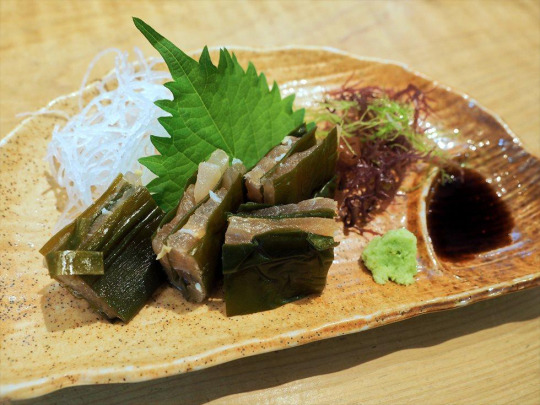
Kombujime (source)
Kombujime (also kobujime) is a local Toyama dish made by sandwiching light-tasting foods such as whitefish (most commonly marlin) and wild vegetables between sheets of kelp (or kombu). Other popular fillings include other whitefish, shrimp, tofu, and beef. The prefecture boasts the highest kelp consumption, and thus kombu is also widely available at supermarkets.
The technique used to make kombujime (which means "kombu curing") enhances the taste of the sashimi through aging the fish between two sheets of kombu. This technique softens the fish texture and the glutamates from the kelp transfer over to the fish, accentuating its flavor.
Toyama Dialect・Toyama-ben・富山弁
Toyama-ben is also called Etchu-ben (越中弁), and consists of West (Gosei, 呉西), East (Gotō, 呉東), and Gokayama (五箇山) dialects. The dialect is a combination of sounds and features close to Kansai and Tohoku dialects, but still quite different from the other dialects in the Hokuriku area.
うい ui
Standard Japanese: いっぱい 、満足、胸やお腹が苦しい (ippai, mune ya onaka ga kurushii) English: I'm stuffed; my chest or stomach feels tight
食べ過ぎて、はらういわ。 tabesugite, hara ui wa
食べ過ぎて、はらいっぱい。 tabesugite, hara ippai
I ate too much, I'm stuffed.
2. きどくな kidokuna
Standard Japanese: ありがとう (arigatou) English: thank you
あら、きどくな。 ara, kidokuna
あら、ありがとう。 ara, arigatou
Oh my, thank you.
3. じゃまない (jyamanai)
Standard Japanese: 大丈夫、問題ない (daijyoubu, mondai nai) English: I'm OK, no problem
A: 体調、いかがですか? B: じゃまない、じゃまない! A: taichou, ikaga desu ka? B: jamanai, jamanai!
A: 体調、いかがですか? B: 大丈夫、大丈夫! A: taichou, ikaga desu ka? B: daijyoubu, daijyoubu
A: How are you feeling? B: I'm doing well!
4. こわい (kowai)
Standard Japanese: かたい (katai) English: firm, tough
このご飯、こわいわ。 kono gohan, kowai wa.
このご飯、かたいなあ。 kono gohan, katai naa.
This rice is really hard.
5. つかえん (tsukaen) (also, なん nan、つけん tsuken)
Standard Japanese: かまわない、問題ない (kamawanai, mondai nai) English: it's fine, it's no problem
A: もう少し、待っていただけますか? B: つかえんちゃ! A: mou sukoshi, matte itadakemasu ka? B: tsukaen cha!
A: もう少し、待っていただけますか? B: 問題ない! A: mou sukoshi, matte itadakemasu ka? B: mondai nai!
A: Can you please wait a little longer? B: No problem!
More Toyama dialect here (JP with EN).
#japanese prefectures#日本語#japanese#japanese language#japanese langblr#langblr#studyblr#都道府県#富山県#toyama
36 notes
·
View notes
Text
Hunt Mark Bune is actually Rielle's Dad - Translations
The English translation changed a bunch of facts that led English-only players to miss that Rielle's father is indeed alive and you can hunt him.

In the Japanese quest, this is what Sidurgu says about Rielle's family:
シドゥルグ:Name……。俺たちが今まで調べたことと、リエルの証言……そして裏の筋から得た情報で、やっと事の全容が見えてきた。
シドゥルグ:こいつの本名は、リエル・ド・コーリニョン。高名な聖職者や、正教がらみの機関の重役を輩出している、名門貴族コーリニョン家の娘だ。
シドゥルグ:その母親……女当主の、イストリド・ド・コーリニョンは、ある貴族の男を婿に迎えて、リエルをもうけた。
シドゥルグ:婿となった男が、ひそかに異端者に賛同している過激派で、竜の血を飲んでいたことなど知らずにな……。
シドゥルグ:数年後、コーリニョン家で得た情報を異端者に流し終えた男は、さらに竜の血を呷り、完全なドラゴン族となって、一家を滅ぼそうとした。
シドゥルグ:その野望は、精鋭の騎士たちによって阻まれたが、事実を知ったイストリドは、男の……竜の血を引くリエルを幽閉した。
シドゥルグ:……今更になって、命まで奪おうとしているのは、正教に忠義を見せるためか……。
シドゥルグ:何にせよ、俺たちは暗黒騎士としての役目を果たすだけだ。イストリドとの決闘に勝利してな。
Sidurgu: WoL.... I've finally pieced together the whole story, from what we found in our investigation, what Rielle testified... and what I found out through the underground.
Her real name is Rielle de Caulignont. A daughter of the same well-known aristocratic Caulignont family that produces many famous clergy and instrumental Holy See attendants.
That mother... the female family head, Ystride de Caulignont, married another aristocratic man and bore Rielle.
Unbeknownst to her, her groom was a member of a radical faction of heretics who had drunk dragon blood...
A few years later, after having finished secretly leaking information gained in the Caulignont family to the heretics, the man drank more dragon blood and fully transformed into a dragon, and tried to kill his family.
However, his plan to kill them was foiled by elite knights but... knowing that her daughter had that man's- that dragon's- blood, Ystride locked up her daughter.
...Coming to kill her after all this time must be her way of showing her loyalty to the Holy See.
In any case, as Dark Knights we must carry out our duty. By winning this dual with her, that is.
This is what the Japanese hunt mark description says:
ユステシア: 異端者は、多くが平民出身だけど、中には貴族もいるわ。ある男性貴族が、妻である名門貴族の女当主を利用することで、長年に渡り、神殿騎士団の情報を流していた事があってね。
こともあろうに、この男は一通り情報収集を終えると、「竜の血」を飲んでドラゴン族の眷属と化したの。家族を殺して、証拠を隠滅するためにね……。
幸い神殿騎士団の活躍で、最悪の事態は免れたけど、眷属と化した男は、皇都を脱出して逃げ去ったというわ。討伐依頼を出してきたのは、生き残った妻よ。
Eustacia: Heretics usually come from the common people, but there are some aristocrats among them. One such aristocratic man used his wife, the female head of a noted aristocratic family, to get information on the Temple knights to leak, for many years. Of all things he could have done, the man finished his intelligence gathering by drinking dragon blood and turning into a scalekin himself. In order to kill his family and hide the evidence... Thankfully, the Temple Knights intervened and stopped the worst from happening. The man who turned into a scalekin was said to have escaped the city and run away. The one who put out the hunt bounty on him was none other than his surviving wife.
44 notes
·
View notes
Text
Hitorie - Shadowpray - Lyrics English Translation
Music: Yumao Lyrics: Yumao/Shinoda 後悔 状態 未来 想像なんてつかない Remorse, circumstance, occurrence, all that which I can’t even fathom 電線の行方 Where do the electric wires lead 情熱 才能 醜態 みんな許せない Passion, talent, misdemeanor, all that which I can’t forgive 水滴が濁す Beads of water that muddle 心臓 愛情 由来 言語化はし難い The heart, love, origins, all that which is difficult to put into words ゆりかごの跡 The vestiges of a baby cradle 能動 回転 現在 どうなったって良いじゃん Activity, orbit, the instant, I don’t care what happens 心の隙間 The gaps in my heart 触れないでまだ Don’t touch me yet 足りない、足りない、足りない、帰れない It’s not yet enough, it’s not yet enough, it’s not yet enough, I can’t go back 着飾って 孤独と嘘を溶かしても Despite embellishing it, and melting the lies and loneliness away 物語は始まらない My story isn’t beginning 最大公約数、最中 熱は冷めていく The greatest common factor, in the great moment the heat begins to die down faster 逃げないで 虚空の幼い切断と Don’t run away, the young severance of empty space and 湿度に溺れる、明日も 明日も Drowning in the humidity, day after day 今も 祈る 黒い影 Even now, I pray, the black shadow 触れないでまだ Don’t touch me yet 足りない 足りない It’s not yet enough, it’s not yet enough 触れないでまだ Don’t touch me yet 足りない 足りない 足りない、、、 It’s not yet enough, it’s not yet enough, it’s not yet enough,,, 同情 批判 葛藤 どうなったって良いんだ Empathy, criticism, conflict, I don’t care what happens また繰り返しちゃってる Here we go again 着飾った 孤独と嘘が手を繋ぐ I embellished it, the lies and the loneliness join hands 唱えたいことが有り触れる Things I want to sing of exist far and near 最大公約数、最中 熱は冷めていく The greatest common factor, in the great moment the heat begins to die down faster 今だけ 差し伸べる壁の向こう In this exact moment, I reach out to the other side of the wall 優しく誘われる明日も Even the day, after I’m gently lured in 今も 願う 願う 白い影 And even now, I wish, I wish, the white shadow 僕の影 My shadow 見失って胸が痛む夜も Even during the nights when I lose sight of my shadow and my chest aches 笑って居れる明日も 明日も I can keep on smiling, day after day 今も 想う 黒い影 Even now, I think fondly upon, the black shadow
Footnotes:
● Could the song name be paying homage to Joy Division's song "Shadowplay"? Maybe…
● Relevant segment from the Skream! interview https://skream.jp/interview/2025/01/hitorie.php:
-なるほど。そしてゆーまおさんの楽曲「Shadowpray」はどんな着想でしたか? Yuka Ishizumi, interviewer: What was the inspiration behind Yumao's song, Shadowpray? ゆーまお:これは逆に、全くオルタナとかシューゲイザーのこと等1ミリも考えてなくて(笑)。 Yumao: This song, unlike Quadlirateral Vase, did not involve even one ounce of regard for alternative or shoegazer or anything like that(laughs). シノダ:興味ないもんね(笑)。 Shinoda: You’ve got no interest in those genres after all (laughs). ゆーまお:「Shadowpray」を作ってた頃からこの2年間ぐらい、バンド・サウンドの曲をほとんど作ってなくて。 Yumao: We wrote Shadowpray 2 years ago, and since then we haven’t written any rock band style songs. シノダ:モードが逆転したんだけど(笑)。 Shinoda: We entered into a totally different mode (laughs). ゆーまお:そうそう、逆転したんですよね。そういうモードになっちゃって、ループ素材とかシーケンスを使う曲を量産してたんです。 Yumao: That’s right, we swerved in a completely new direction. And once we got into that zone, we started mass producing songs that utilized sequencers and loop samples. シノダ:これまでの彼の曲のデモは絶対自分で叩いたドラムが入ってて、彼のドラムありきみたいなデモだったので、バンド・サウンドが多かったんですよ。(今回は)全然そうじゃない。逆にリズム・トラックだけで10トラックぐらい入ってるみたいな(笑)。 Shinoda: Up until then Yumao’s drafts have always involved him playing the drums himself, and due to his drum playing being so prominent, his songs have always sounded rock band-esque. However, this time things were different. This time around our album has around 10 tracks that are just backing tracks (laughs). ゆーまお:リズム・トラックのことだけはなんとなく分かるからそうなっちゃってるだけなんですけど、そんな感じでシノダの反応も一番良かったのでこれになりました。あとはだいたいの歌詞を書いたのが一番の変化ですかね。 Yumao: Somehow backing tracks are like my bread and butter, so it just kind of ended up that way. Not to mention that Shinoda reacts the best to them. The overall biggest change though was that I wrote most of the lyrics myself this time around. シノダ:ついにゆーまお君が歌詞を書くことになりました。好きになったんだよね。もともと好きっていうのもあるけど。 Shinoda: At long last has Yumao done a deep-dive into lyric writing. He came to really enjoy doing it. I mean, he’s always enjoyed it but… ゆーまお:そうそう。好きだったっていうのもあるけど、自分がたまたま書いてた歌詞をちゃんと作品として残してみたいと思ったのが一番強いかもしれないですね。楽曲どうこうというより、そこにチャレンジしたいっていうのはありました。 Yumao: Yep yep. The fact that I enjoy writing lyrics was one part of the formula, but the most important thing to me was my desire to turn the words I once wrote willy-nilly into something proper. The musical accompaniment wasn’t my top priority, I was more fussy with the lyrics, because that was the challenge I was most interested in taking. -たしかにゆーまおさんの楽曲はアルバムの中で、音像としてはフックになってますね。それでもダークさはある気がして。今回は曲が集まって、結果的にオルタナティヴ色が濃くなったんでしょうか。 It’s true that Yumao’s songs, in terms of pure musical imagery, tend to be “the hooks” of your albums. Yet they do also have a tinge of darkness to them. So, once you put all of the songs together into an album, I feel like the result of the whole is a heavily alternative-colored piece. シノダ:どうしても根底にある好きなものが滲み出てしまうもんで、そこの蛇口がちょっとバカになってきたみたいな感じだと思うんですけど。昔3人でやり始めた頃はとにかく迷いながら、"本当にこれでいいんだろうか?"、"正しいんだろうか?"みたいな、分かるわけないようなことに対して悩みながら作ってたけど、だんだん"そうじゃないな"、"別にもっと好きなものを作ったっていいんじゃないの?"と。それで作っていったら単純にオルタナが好きで、それがバレてしまったみたいなことなんじゃないかなと思いますね(笑)。 Shinoda: My core interests just tend to seep out no matter what I do, and at this point I think my faucet is fucked. Back when we first started operating as a 3 man unit, I was constantly under stress when writing, worrying about things that had no answers. I was just constantly doubting myself, thinking “Are you really sure this okay?” and “Is this the right thing to do?” Slowly but surely I came to realize that there was no need to worry, and let my creative juices run free. Once I did that, I think it became pretty obvious that I just, love alternative music (laughs).
16 notes
·
View notes
Text
Memo for Episode 40 “Festering Resentment”
虞淵(やぶ医者)「どれどれ…羅門さん、綺麗(きれい)な字(じ)を書(か)くねぇ」
Guen (Yabu-Isha) “Dore-dore… Ruomen-san, kirei-na ji’o kaku-nee.”
Guen (Quack Doctor) “Let’s see. Wow, Luomen, your handwriting is very pretty.”
It’s true that thanks to computers and smartphones, there are fewer opportunities to write by hand recently, but still, being able to write beautifully is a very good thing in Japan. I think that people overseas probably have no idea whether the Luomen’s handwriting shown in this anime is beautiful or not, but I thought it very beautiful although I couldn’t read it at all. Handwritten characters are like a work of art, so it’s natural that we can tell who wrote them.
――――――――――――――――――――――――――――――
羅門「じゃあ、これを書(か)き取(と)り練習(れんしゅう)の手本(てほん)にできないか、聞(き)いてみてくれないかね?」
Ruomen “Jaa, kore’o kaki-tori-renshu’no tehon’ni deki-nai-ka, kiite-mite-kurenai-kane?”
Luomen “In that case, can you go and ask if they can use this as an example to practice writing with?”
手本(てほん/Tehon): model, example
――――――――――――――――――――――――――――――
虞淵(やぶ医者)「はいよ」
Guen (Yabu-Isha) “Hai-yo.”
Guen (Quack Doctor) “Sure.”
はいよ!(Hai-yo): a casual and lively way of saying “はい/yes”. In this case, Guen is just speaking friendly.
――――――――――――――――――――――――――――――
猫猫「これかな…。やらないから」
Maomao “Kore-kana… Yara-nai-kara.”
Maomao “Maybe it’s this. You can’t have it.”
やる(Yaru): give, do
やらないから(Yaranai-kara): I’ll not give this to you, so…(stop, give up, and so on.)
――――――――――――――――――――――――――――――
老宦官「ほう、それは初耳(はつみみ)だ。今日(きょう)は小蘭(シャオラン)はいないのかね?」
Ro-kangan “Ho, sore’wa hatsu-mimi-da. Kyo’wa Shaoran’wa inai-no-kane?”
Old eunuch “Oh, that’s news to me. Isn’t Xiaolan here today?”
初耳(はつみみ/Hatsu-mimi): hearing something for the first time
それは初耳だ(それははつみみだ/Sore’wa hatsu-mimi-da.): That’s news to me. It’s the first time I’ve heard of it.
――――――――――――――――――――――――――――――
猫猫(診療所(しんりょうじょ)か…。深緑(シェンリュ)様(さま)なら、若い宦官(かんがん)をこき使(つか)いそうだ)
Maomao (Shinryo-jo-ka… Shenryu-sama-nara, wakai kangan’o koki-tsukai-soda.)
Maomao (The clinic… I guess Lady Shenlü would have a lot of work for the young eunuchs.)
こき使う(こきつかう/Koki-tsukau): use something hard, drive somebody hard, overwork = 酷使する(こくしする/Kokushi-suru)
――――――――――――――――――――――――――――――
老宦官「ははぁ。これを書(か)き写(か)させて、あちこち張(は)ろうってことだね」
Ro-kangan “Hahaa. Kore’o kaki-utsu-sasete, achi-kochi harotte koto-dane.”
Old eunuch “Ha, ha. He wants to make copies to put them up everywhere.”
ははぁ(Hahaa): I see, I know, I guess…
――――――――――――――――――――――――――――――
翠苓「相変(あいか)わらず勘(かん)が働(はたら)くな。おかげで私(わたし)は死体(したい)になり損(そこ)ねた」
Suirei “Ai-kawarazu kan’ga hataraku-na. Okage’de watashi’wa shitai’ni nari-soko-neta.”
Suirei “You’re a smart one, as always. Like the time you prevented me from becoming a corpse.”
相変わらず(あいかわらず/Ai-kawarazu): As before, as always
勘が働く(かんがはたらく/Kan’ga hataraku): be intuitive, have a good intuition/sixth sense
(~の)おかげで(Okage-de): thanks to~, because of~
In this case, adding “その” just before “おかげで” makes it easier for you to understand.
相変わらず勘が働くな。(その)おかげで私は死体になり損ねた。
“As before, you have a good intuition. Because of it/That’s why I failed to become a corpse.”
――――――――――――――――――――――――――――――
猫猫「ここで私(わたし)を始末(しまつ)したところで、すぐ見(み)つかりますよ」
Maomao “Koko’de watashi’o shimatsu-shita-tokoro-de, sugu mitsukari-masu-yo.”
Maomao “If you killed me here, they’d find you right away.”
(もし/たとえ)~したところで: Even if~ = もし~しても/たとえ~したとしても
The translation is “If~”, but to be strict, “Even if~” is better.
――――――――――――――――――――――――――――――
羅漢「ええ。大量(たいりょう)に作(つく)ることができれば、戦(いくさ)がガラリと変(か)わるでしょうな。より密集(みっしゅう)した陣形(じんけい)も取れるし、移動(いどう)もしやすい。それを…皇(おう)弟(てい)の命(いのち)を狙(ねら)うような不届(ふとど)き者(もの)が持(も)つとは。あやつらは、どうやってこれを手(て)に入(い)れたんですかねぇ…」
Rakan “Ee. Tairyo-ni tsukuru-koto’ga dekireba, ikusa’ga garari-to kawaru-desho-na. Yori misshu-shita jinkei’mo torero-shi, ido’mo shi-yasui. Sore’o…otei’no inochi’o nerau-yona futodoki-mono’ga motsu-towa. Ayatsu-ra’wa, do-yatte kore’o te’ni-iretan-desu-ka-nee…”
Lakan “Yes. If it could be mass-produced, it would change the shape of warfare. It would allow for more tightly-packed formations, and make travel easier. Such an item being carried by scoundrels who seek to assassinate the imperial younger brother… I wonder how they got their hands on this.”
移動する(いどうする/Ido-suru): move (from somewhere to elsewhere)
It’s translated as “make travel,” but I think it means moving around in a battle in this case. This word is used to mean to move either a long or short distance.
――――――――――――――――――――――――――――――
子昌「七日七晩(なのかななばん)お祭(まつ)り騒(さわ)ぎだったと聞(き)いておりますぞ」
Shisho “Nanoka-nana-ban omatsuri-sawagi-datta-to kiite-ori-masu-zo.”
Shishou “They say that it was a whole week of festivities.”
→It sounded like the VA said “Nanoka-nano-ban,” but as far as I know 七日七晩 is read as “Nanoka-nana-ban.” I don’t know if I mis-heard it or nano-ban is also correct. Maybe it’s just common to read it as nana recently, but originally it was correct to read it as nano, because I think if he just pronounced it wrong, they would have corrected it and re-recorded it.
七日七晩(なのかななばん/Nanoka-nana-ban): seven days and seven nights
――――――――――――――――――――――――――――――
阿多「狐(きつね)が変人(へんじん)過(す)ぎて、狸(たぬき)が普通(ふつう)に見えた」
Āduo “Kitsune’ga henjin-sugite, tanuki’ga futsu-ni mieta.”
Ah-Duo “The fox was such a weirdo, it made the tanuki look normal.”
狸(たぬき/Tanuki): raccoon dog, tanuki
――――――――――――――――――――――――――――――
阿多「その娘(むすめ)の件(けん)で対応(たいおう)に追(お)われているのだろう?宦官(かんがん)・壬氏殿(ジンシどの)は。まさか…行方不明(ゆくえふめい)になるとはな」
Āduo “Sono musume’no ken’de taio’ni owarete-iruno-daro? Kangan-Jinshi-dono’wa. Masaka…yukue-fumei’ni naru-towa-na.”
Ah-Duo “And that daughter is why Master Jinsh the eunuch is busy, correct? To think she’d go missing…)
~の件で(~のけんで/~No ken’de): regarding~, in/with regard to~, about (the matter of)~
件(けん/Ken): matter, case, subject, issue
行方不明(ゆくえふめい/Yukue-fumei): missing, unaccounted for
――――――――――――――――――――――――――――――
From this episode, the rapid development towards the climax of Season 2 began. In the anime, Lakan was very cool, wasn’t he? In the original novel, it’s described more comically. While drinking juice with Shishou and Ah-Duo who pretended to be the imperial younger brother, he suddenly took out a mooncake from his pocket and ate it, with tiny pieces of mooncake around his chin, and even after Shishou left, he continued to talk to Ah-Duo about the Go game he had played with his wife… I like the serious and cool Lakan, but I love the gap between the comical and serious parts, so I want the comical movements to be animated without being omitted. That said, when Lakan first appeared I thought he was an absolute villain, so now I can’t believe that I like him very much. Where will Maomao be taken, and what will happen to her? I’m looking forward to the next episode.
#apothecary english#apothecary romaji#the apothecary diaries#apothecary diaries#learning japanese#japanese#薬屋のひとりごと#薬屋のひとりごと 英語#薬屋 英語 学習#japan#KNH#season 2
11 notes
·
View notes
Text
矛盾のグリムジエンド
The Contradictory Grim the End
とある職人が作ったその鍵に
A certain craftsman made a key
開ける扉はもうこの世には無い
The door it opens no longer exists in this world
理不尽な運命 その果てに倒れた
Having succumbed at the end of an irrational, unfair fate
闇と光の相反する魂
Were two opposing souls of light and darkness
.
それが「グリムジエンド」
That was "Grim the End"
憤怒の罪の象徴
The symbol of the sin of wrath
.
闇の男は原罪を引き裂き
The man of darkness was Twiright
悪の繁栄を願うトワライト
Who sought for evil to prosper by splitting up the original sin
光の男は愛する者のため
The man of light was Moonlit
それらの破滅を願うムーンリット
Who sought its destruction for the sake of the one he loved
.
時代によって姿を変えるそれは
It would change its form for each era--was it
罪作りな器か
A vessel to make sin?
罪殺しの道具か
A tool to kill sin?
.
残酷な童話が幾百生まれる
A cruel fairytale over hundreds of years produced
生まれ持つ人の怒り引き出す器
A vessel that drew out people's innate rage
.
愛を失った誰かの怒りが
The rage of someone who's lost their love
それを終わらせるだろう
Would likely put an end to it
.
矛盾したその存在
It contradicted its own existence
.
偽りの公爵 女を拐かし
A false duke kidnapped a woman,
その恋人の恨みを買った
And incurred the vengeance of her lover
飢えた令嬢に毒を盛ったのは
A starved noble woman was poisoned
過去の彼女に惹かれた王子
By a prince who'd been charmed by her past self
.
それは大罪人に
That was a judgment to hand down punishment
罰を与える裁き
To those grave sinners
.
白ノ娘は親友を殺した
Though the Daughter of Evil killed her dear friend
悪ノ娘を許してしまった
The Daughter of White forgave her
光の男は目的果たせず
Unable to achieve his goal, the man of light
少しずつ魂 すり減り始めた
Felt his soul begin to wear down, little by little
.
記憶を保って生き続ければやがて
If he kept living on this way with his memories intact, eventually
神のルールによって
By the Rules of the gods
その魂は壊れる
His soul would break down
.
錆びついて欠けてく僕の歯車
My rusting, chipping gear
残された時間はもう長くはない
Doesn't have much time left
.
それでも全ての罪が消えるまで
Still, until I've erased all of the sin
僕は諦めはしない
I won't give up
.
いつか君に会える日まで
Until the day I can see you again
.
心の壊れた裁判官が
The heartbroken judge
罪のかけらを集める終末
Had the end goal of gathering the fragments of sin
彼に取り憑いてた光の歯車も
The gear of light that came to possess him
既に錆びつき砕けた
Had already rusted and broken to pieces
.
罪を殺すための存在だったのに
Though it had existed to kill sin
今ではその罪求める
Now it sought sin out
矛盾のグリムジエンド
That was the contradictory Grim the End
.
闇の男の高笑いが
The man of darkness' roar of laughter
どこから聞こえてきた
Could be heard from somewhere
.
残酷な童話が幾百生まれる
A cruel fairytale over hundreds of years produced
生まれ持つ人の怒り引き出す器
A vessel that drew out people's innate rage
.
愛を失った誰かの怒りが
The rage of someone who's lost their love
僕を終わらせるだろう
Will likely put an end to me
.
矛盾した......
It made a contradiction...
もうすぐ君に会いに行くよ
I'll go to see you very soon
77 notes
·
View notes
Video
youtube
愛してあげられなくてごめんね I'm Sorry I Couldn't Love You
Music/Lyrics: Vuvuzela Illustration/Video: SiK-SiK English Translation/Subtitles: Kesera
Our Tumblr: https://magenetratranslations.tumblr.com/ Our Twitter: https://twitter.com/the_magenetra Current WIPS, Producer Permissions List, and Translation Terms: https://docs.google.com/document/d/1jdtr8oVjZP6tjSIRtfu1JWiW4VHQa4tjMMCAzv0-KIw/edit?usp=sharing Raffle Discord: https://discord.gg/7gRYaugxTZ
Lyrics:
愛してあげられなくてごめんね。ごめんね。ごめんね。 「いいよ!」 愛してあげられなくてごめんね。 だってタイミングなかったもん 愛してあげられなくてごめんね。ごめんね。ごめんね。 愛してあげられなくてごめんね。 “わかってあげたフリ”だったよ I’m sorry I couldn’t love you. I’m sorry. I’m sorry. "It’s alright!" I’m sorry I couldn’t love you. I just never got the chance to. I’m sorry I couldn’t love you. I’m sorry. I’m sorry. I’m sorry I couldn’t love you. “I was just pretending to understand you”
便利な時代になったもんだね アンタにゃばれっこない嫌なとこ 便利な時代になったもんだね 面会室に差し入れラブレター に、書いたんだ It was a convenient time It’s something horrible that you never would’ve realized. It was a convenient time, so I dropped off the love letter I wrote in the visitation room
「愛してあげられなくてごめんね。ごめんね。ごめんね。 愛してあげられなくてごめんね。 だってタイミングなかったもん 愛してあげられなくてごめんね。ごめんね。ごめんね。 愛してあげられなくてごめんね。 ぎゅっと首を抱き締めて I’m sorry I couldn’t love you. I’m sorry. I’m sorry. I’m sorry I couldn’t love you. I just never got the chance to. I’m sorry I couldn’t love you. I’m sorry. I’m sorry. I’m sorry I couldn’t love you. Please put your arms around my neck and hold me tight
「全世界が夕暮れ 崖際に立って笑う君の 頬を伝った水で育ててみたカーネイション」 ぜんぶ今朝見た夢のこと "The whole world is twilight, you’re standing at the edge of a cliff, smiling water rolled down your cheek trying to nurture a carnation” I dreamt all of that this morning
毎日心配させてごめんね。ごめんね。ごめんね。 愛してあげられなくてごめんね。 “わかってくれたフリ”をして 僕ばかり��気そうでごめんね。ごめんね。ごめんね。 愛してあげられなくてごめんね。 愛想なくなってもみせて I’m sorry for making you worry every single day. I’m sorry. I’m sorry. I’m sorry I couldn’t love you. “I was just pretending to understand you” I’m sorry I’m the only one who’s seemed so lively. I’m sorry. I’m sorry. I’m sorry I couldn’t love you. Show it to me, no matter how unkind
忘れたのなら思い出せ! 「私はあなたの、ことが好きです。だから私と別れてください」 そう口にした、貴方の横顔 ハッとするほど綺麗だった 愛してあげられなくてごめんね。ごめんね。 ごめんね。ごめんね。ごめんね。ごめんね。 If you’ve forgotten it, then remember! "That I love you. So please break up with me" You said, your face in profile I was surprised by your beauty. I’m sorry I couldn’t love you. I’m sorry. I’m sorry. I’m sorry. I’m sorry. I’m sorry. I’m sorry.
仮に上半身が吹っ飛んでなくなっちゃっても 何にも気にせず愛せるくらいに貴方が好きよ 次に下半身が独りでに歩き出したなら 一緒にスキップしましょう ねえ どうせ死ぬなら僕の横にいて。そうして。そうして。 数えきれない暴力の夢 ならばリアルは全て優しく Even if my upper body gets blown off I love you so much that I can love you without having to worry about anything If my lower half were to start walking on its own then let’s skip along together Hey, stay by my side if we’re gonna die anyways. And then. And then. I can’t count how many violent dreams I’ve had. If that’s the case, reality is entirely kind.
愛してあげられなくてごめんね。ごめんね。ごめんね。 愛してあげられなくてごめんね。 だってタイミングなかったもん 愛してあげられなくてごめんね。ごめんね。 ごめんね。ごめんね。ごめんね。ごめんね。 I’m sorry I couldn’t love you. I’m sorry. I’m sorry. I’m sorry I couldn’t love you. I just never got the chance to. I’m sorry I couldn’t love you. I’m sorry. I’m sorry. I’m sorry. I’m sorry. I’m sorry.
#youtube#I'm Sorry I Couldn't Love You#愛してあげられなくてごめんね#utau#utauloid#vocaloid#kasane teto#Vuvuzela#translation
21 notes
·
View notes
Text



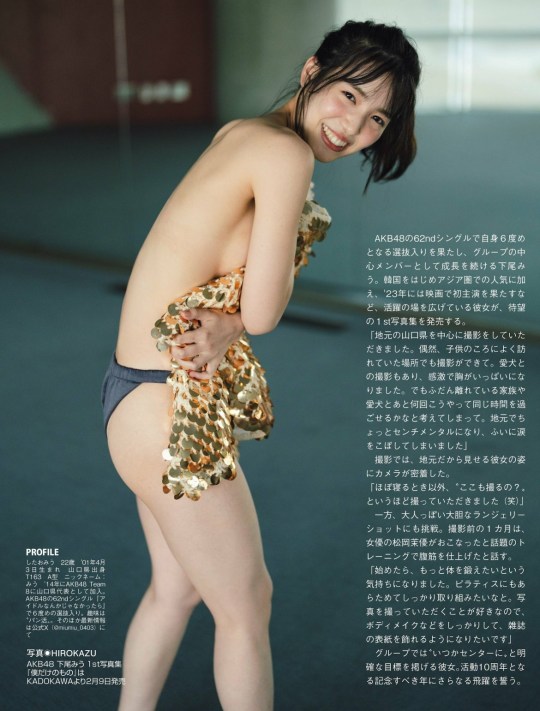
下尾 みうは、日本のアイドル、YouTuberであり、女性アイドルグループ・AKB48のメンバーである。元チーム8 山口県代表。山口県出身。Superball所属。2018年6月から8月にかけて放送された公開オーディション番組『PRODUCE 48』のファイナリスト。 ウィキペディア
出生地: 山口県
生年月日: 2001年4月3日 (年齢 22歳)
身長: 162 cm
デビュー: 2014年
事務所: Superball
愛称: みう
キャッチフレーズは、「下を見ず、上を向いてマイペースに頑張ります。下尾みう、高校2年生の17歳です。」
グループ外では山口県内での活動が多く、2019年には春の全国火災予防運動キャンペーン中、山口市消防本部一日消防長に就任したほか、防火パレードにも参加。2019年6月25日に放送された「AKBINGO!」(日本テレビ系列)では下尾にスポットを当てた特集��中で山口県の実家でのプライベートが紹介され、「自然体でいられるのは山口県で、夢を追いかけられるのが東京」と語った。
2018年にMnetで放送されたオーディション番組『PRODUCE 48』に出演し、ダンスやパフォーマンスのクオリティの高さが韓国で注目を集めた。 2018年7月20日に放送された同番組の第6話ではポジション評価の様子が放送され、24日には各動画サイトを通じ、この評価で行われたステージの個人フォーカス動画が公開。韓国の動画サイト「NAVER TV」では、下尾のフォーカス動画の再生回数がHKT48の宮脇咲良に続いて全体の2位にランクインし、日韓のネット上では絶賛の声が寄せられた。以降も韓国を含む中国、タイなどアジアでの人気が高い。2018年9月に開催中の「山口花博」で行われた下尾のスペシャルライブに韓国から多数のファンが来場した。
すぐに迷子になるため、「おっちょこちょい」や「天然」とよく言われる。
55 notes
·
View notes
Text
★Jimrat
⋱ ★⭐︎𝐌𝐲 𝐅𝐚𝐯𝐨𝐫𝐢𝐭𝐞 𝐀𝐫𝐭𝐢𝐬𝐭 𝐨𝐟 𝟐𝟎𝟐𝟒⭐︎★ ⋰
ボストンを拠点とする実験的なロックバンド。私が彼らを見つけたのはyoutubeだったと思う、「I hate shoegaze 」という曲のMusicVideoが突然流れてきて街を駆け抜け、小さなスタジオで演奏する1分半もない映像が私に刺さった..................


インタビューを探してみるとZINEの中でJimratは約10人で構成されたバンド兼アートコレクティブだと書かれている。
“The collective of Jimrat consists of vocalist and songwriter Sam, drummer Tim, bassist E guitarist/vocalist/synthesist Emma, guitarist/vocalist Josie, guitarist Jacob, electronic music producer Fern, artist and performed Lauren, photographer/performer/painter Stephen, and graphic designer/creative director Hector.”
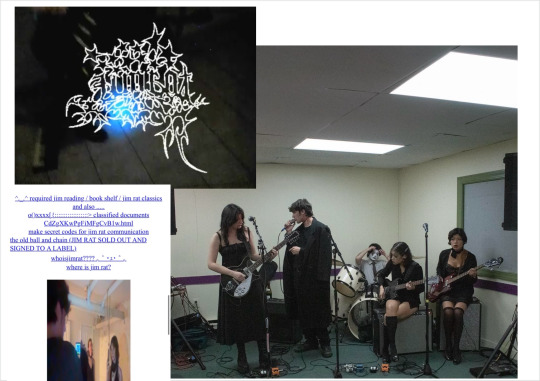
バンドメンバーの他にフォトグラファーやグラフィックデザイナーやクリエイティブデザイナー、パフォーマー、なども含まれている。

彼らのスタイルは、ノイズロック、シューゲイズ、インディーロック、エレクトロニックな要素を融合していて、DIY精神に溢れたジャンルの境界を越えるアプローチ。アンビエント的なものも取り込まれていて10月のリリースされたシングルのカップリング曲「Again」「Give in」 は10分以上にも及ぶアンビエント楽曲となっている。

本当にこれがかっこよくて好き。
バンドはWHO IS RECORDSというレーベルに所属し、これまでに複数のアルバムやシングルをリリース、彼らの作品には、ノスタルジックなインターネット美学が取り入れられていて、彼らのウェブサイトが特にそれを感じる。
instagram@whoisjimrat ←

深い感情表現と実験的な音作り、シューゲイズ的な要素と大胆な電子音楽の組み合わせがかっこいい。ビジュアルやアートの面でも作り込まれた世界観が本当にかっこいい、、どんなプロジェクトでどんなことを表現しているかはYouTubeや彼らのウェブサイトをチェックするのが1番理解できると思う。

インタビューの中で「全てのメンバーがプロジェクトに積極的に参加し、グループの決定に平等に発言権がある。」と書いてあったのも印象的だった。
遠く離れた行ったこともない知らない場所でこんなかっこいいことをしている人たちがいることになんか勝手に救われた。
#Youtube#Spotify#indie rock#indie music#shoegaze#noise rock#ambient#electric music#art collective#music blog
17 notes
·
View notes
Text
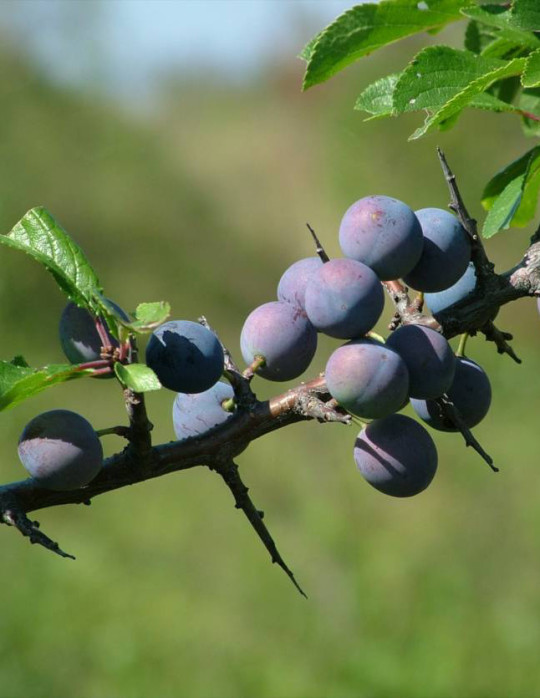
Legends and myths about trees
Celtic beliefs in trees (24)
Ss for Straif (Blackthorn) - Samhain/Hallowe'en, opening the veil between this world and the spirit world…
“Mother of the Forest – The Celtic Tree Calendar (Ref), The Beginning of Winter”
Colour: red; Star: Mars, Saturn; Gemstone: black opal; Gender: female; Patron: Morrigan; Symbol: inevitability of death, protection + revenge, discord + insidiousness
Blackthorn forms vigorous young trees from the roots, from which dense, thorny bushes grow in dense clumps. Armed with sharp thorns, which can damage human skin. It already starts flowering in early spring, at the beginning of March, and with the onset of winter it produces black berries, commonly known as 'sloes'.
Samhain is the most important festival in the Celtic world, celebrated on 1st November to mark the beginning of winter and therefore the new year. The name 'Samhain' means 'end of summer'. The seasons change from summer to winter (the time of the dead) with this festival. It is a period of short days and darkness, but it is a necessary period for nature to enter a peaceful rest and welcome the bright spring. In the calendar of agricultural societies, this is an important stage for the germination of crop seeds.
Samhain was the solemn festival, when fires were lit and sacrifices were offered to gods such as Taranis and Teutates. Importantly, it was believed that on the eve of this day, 31 October, a passage between this world and the spirit world was opened, allowing inhabitants from the other world to come and visit this world freely and interact with humans in this world. However, while the comings and goings were sometimes favourable, it was also envisaged to be dangerous.
On the Samhain eve, children went from house to house to collect festive offerings. It was also customary to celebrate Samhain by placing a brightly burning candle inside a hollowed-out turnip at the entrance to the house.
Blackthorn is a tree traditionally used for black magic and witchcraft, and its thorns remind us of our own insidious roots. We must remember that we hurt ourselves and others in many ways. If we think about how to avoid hurting each other and courageously face our own insidious roots, blackthorn can guide us to overcome this dark side of our human nature and help us to return the debts of our hearts.
It also helps us to accept the fact that death is something from which no one can escape.
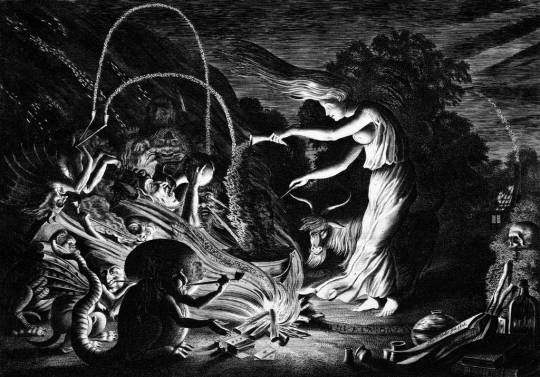
木にまつわる伝説・神話
ケルト人の樹木の信仰 (24)
SはStraif (リンボク) -サ���ィン/ハロウイーン、現世と霊界のヴェールを開く…
『森の母 〜 ケルトの木の暦(参照)、冬の始まり』
色: 赤; 星: 火星、土星; 宝石: ブラックオパール; 性: 女性; 守護神: モリガン; シンボル: 死の不可避性、保護+復讐、不和+陰湿
リンボクは根の部分から活力のある若木を形成し、ここから棘だらけの茂みがびっしりと密生する。鋭い棘で武装したリンボクは密生した藪をつくり、人間の肌を傷つける。3月初旬、早春にもう花をつけ始め、冬の訪れと共に、通称「スロー」という黒っぽい実がなる。
サウィンとは、ケルト世界で最も重要なお祭りで、11月1日に冬の始まり、つまり新年の始まりを祝う。「サウィン」とは「夏の終わり」を意味する。この祭りを境に季節は夏から冬(死者の時期)に変わる。日が短く暗い時期だが、自然が穏やかな休息に入り、明るい春を迎えるために必要な期間である。農耕社会の暦では、作物の種が発芽する重要な時期でもある。
サウィンは最も重要な厳粛な祭りで、火が焚かれ、タラニスやテウタテスといった神々に生贄が捧げられた。重要なのは、この日の前夜、10月31日に現世と霊界を結ぶ通路が開かれ、あの世の住人が自由に現世を訪れ、現世の人間と交流できるようになると信じられていたことだ。しかし、その行き来は時に好ましいものであったが、危険なものであることも想定されていた。
サウィンの前夜には、子供たちが家々を回り、お祝い用のお供えを集めた。サウィンを祝って、内部をくり抜いたカブの中に、明るく燃えたろうそくを立て、家の入り口に飾る風習もあった。
リンボクは伝統的に黒魔術や呪術に使われる木であり、その棘は私たち自身の陰湿な心根を思い起こさせる。私たちは、さまざまな形で自分自身や他人を傷つけていることを忘れてはならない。どうすれば互いを傷つけずにすむかを考え、勇気を持って自分自身の陰湿な心根と向き合えば、リンボクは人間が持つこの暗い側面を克服するように導いてくれ、心の負い目を返上するように導いてくれる。
そして、死は誰も逃れることのできないものであるという事実を受け入れる助けにもなってくれる。
#trees#tree legend#tree myth#folklore#mythology#legend#celtic tree calendar#celtic world#time of the dead#winter#halloween#samhain#nature#art#turnip
130 notes
·
View notes
Text
new challenge. how many vocap from otomu afu & yoshida yose's shiritori game can u recognize. i dont care if u can name a song but how many names do u KNOW uve seen before out of these 166 producers
んべべ商会(nbebe shoukai)
イマニシ (imanishi)
シシド(shishido)
ど〜ぱみん(dopam!ne)
ンバヂ(nbaji)
ちかるとふ(chikarutofu)
フロクロ(frog96)
露徒チーハ(rotsure chiha)
原口沙輔(haraguchi sasuke)
keisei
EZFG
Shu
海風太陽(umikaze taiyou)
海茶(umicha)
やいり(yairi)
RINGO
COsMo
litmus*
5u5h1
しゃいと(shaito)
とまつなぎ(tomatsunagi)
Camelots
ツミキ(tsumiki)
kijibato
とりぴよ(toripiyo)
読谷あかね(yomitani akane)
ねこぼーろ(nekobolo)
LonePi
柊マグネタイト(hiiragi magnetite)
とーず(toze)
SLAVE.V-V-R
rukaku
栗山夕璃(kuriyama yuri)
LitMus
Super Shrimp
Fushi
式浦躁吾(shikiura sougo)
恋文(koibumi)
宮守文学(miyamori bungaku)
梔(kuchinashi)
白風珈琲(shirakaze coffee)
柊キライ(hiiragi kirai)
isonosuke
kemu
mucell
Ruliea
appy
higma
真島ゆろ(mashima yuro)
logico
豪愁(gouu)
卯花ロク(uka roku)
黒うさぎ(kuro usagi)(note: NOT kurousa of senbonzakura fame)
キテ(kite)
tekalu
るうー(ruu)
歌川シキ(utagawa shiki)
霧野査太(kirino souta)
濁茶(dakucha)
やまぐち(yamguchi)
ちいたな(chiitana)
なきそ(nakiso)
Sohbana
夏山よつぎ(natsuyama yotsugi)
Kish.
ゆくえわっと(yukuewatto/U9ewat)
とあ(toa)
r-906(あるくれむと読むことにする/going with the reading of r kuremu)
MURASAKI
キノシタ(kinoshita)
takamatt
Tombi
Hitoka hitomoku
グミ山(gumiyama)
マキシウキョウ(makishiukyou)
鬱(utsu)
鶴三(tsuruzou)
うささぎ(usasagi)
きさら(kisara)
Raz
Sumia
歩く人(aruku hito)
友達募集(tomodachi boshuu)
子牛(cowshi)
椎羅音(shirane)
ねじ式(nejishiki)
キツネリ(kitsuneri)
ryo
梅とら(umetora)
Last Note.
とうかさ(toukasa)
サツキ(satsuki)
きっとずっとぼっち。(kitto zutto botchi)
Chinozo
粗品(soshina)
なぬりそ(nanuriso)
袖野あらわ(sodeno arawa)
和田たけあき(wada takeaki)
Giga
香椎モイミ(kashii moimi)
MIMI
皆川溺(minagawa obore)
れるりり(rerulili)
りうむ(riumu)
ムシび(mushibi)
ピノキオピー(pinoccio)
picdo
doriko
小宮かふぃー(komiya cofey)
Eve
ふむじま(fumujima)
マサラダ(masarada)
たくし(takushi)
shino
のうべんばあ(november)
あ���ちかすか(adachi kasuka)
Kai
ive
藤原ハガネ(fujihara hagane)
Nem
Mumei
Ikaruga_nex
szri
risou
WiLu
るる(ruru)
瑠芽(lume)
メドミア(medmia)
Aliey:s
suragi
木村わい(kimura wai)
いよわ(iyowa)
わーるど(world)
とが。(toga)
Kanaria
阿修(ashu)
うみろ(umiro)
ろ一ある(loar)
*Luna
n-buna
なみぐる(namigroove)
ルシノ(rushino)
Noz.
すずめのめ(suzume no me)
めりろれっく(merirorec)
くるみつはハチ(kurumitsuha hachi)
ちゃんまんじ(chanmanji)
しいか(siika)
かめりあ(camellia)
あ子(ako)
こめだわら(komedawara)
駱駝法師(rakuda houshi)
ジヲ(jiwo)
wowaka
かごめ(kagome)
めろくる(mellowcle)
RuLu
るりられろ(rurirarero)
ろくろ(rokuro)
ローコスト(low cost)
吐息(toiki)
きくお(kikuo)
音無あふ(otomu afu)
藤墅。(fujino)
のぼる↑(noboru)
ルワン(ruwan)
#vsynth#i recognized 96 of them lmao#yes litmus is on there twice & they admit that but im just copy pasting & adding romaji so#if theres typos im so sorry#shu in the replies like 'how did u get my name from that'#& otomus like g -> ji -> shi -> shu#vocaloid#not surprising a lot of my fave producers are here considering theyre friends.#well idk if magu is but like dopam!ne & szri & kurousagi are sort of in the same circles#go nuts im going to bed now maybe
8 notes
·
View notes
Text



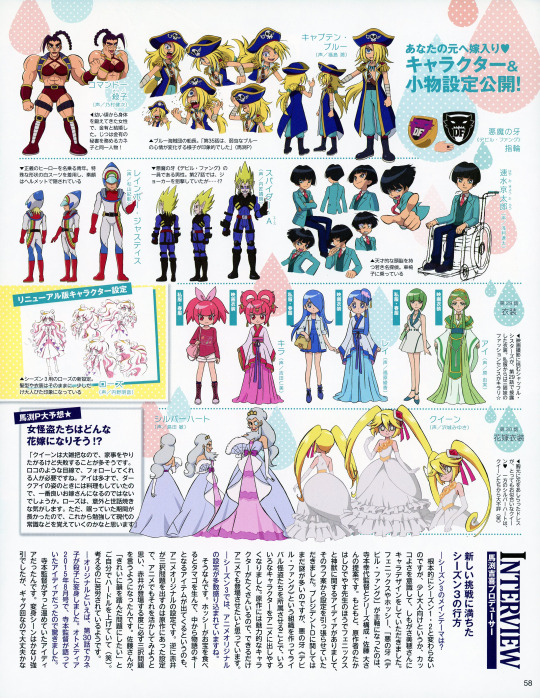
Otomedia June 2016
(Below is a cleaned up machine translation. Please note that due to the nature of machine translation, the text may not be wholly accurate or may read oddly. Japanese is included after English for reference. The text was lifted from the images using this site, and though there's been care taken to make sure everything is correct, there is a chance of unintentional typos.)
With the Only one prince + superb honeymoon in paradise♡
Only oneの王子様と+楽園で極上ハネムーン♡
▼ Spade offers a handkerchief to Joker, who is soaking wet from the rain. Phoenix is in a panic because of the rain, which he doesn't like!
▼雨でびしょ濡れになったジョーカーに、ハンカチを差し出すスペード。フェニックスは、苦手な雨に大慌て!
Joker dressed up as a woman to participate in the World Bride Grand Prix. The exotic dress suits him ♪
世界花嫁グランプリ出場のため、ジョーカーが女装した姿。 エキゾチックなドレスがお似合い ♪
--Producer Mabuchi Yoshiki Interview
Joker and new characters such as Phoenix (Akai Tsubasa) and members of the "Devil Fang" organization led by President D continue their unpredictable adventures in "Kaitou Joker" Season 3. I'm sure your hearts are racing with excitement, but how about another thing that makes your heart flutter♥
This time, we have a fantasy of newlywed life with Joker and friends ♪ We also have special cooking tips for the future brides. Of course, the excitement will be even more intense in the full-length anime! We received the following secret information from producer Yoshiki Mabuchi of Shin-Ei Animation! The main highlights are Phoenix and Hosshi. Their mysteries will be gradually revealed during the 16 episodes between Season 3 and the upcoming Season 4. In Season 1 and Season 2, the story was rather complete, but in Season 3 and Season 4, the mystery will be solved by watching all the episodes. Also, the tricks this time were supervised by a real magician, RYOTA, who came up with the ideas for the tricks.
Let's explore the charms of Season 3 from various angles, such as the concepts of new characters and the event report manga, with Producer Mabuchi still with us. ♪
赤井翼ことフェニックスやプレジデントD率いる組織「悪の牙 《デビル・フ ァング》」のメンバーなど、ジョーカーと新キャラクターたちの予測不可能な大冒険が続く『怪盗ジョーカー』シーズン3。ドキワクの連続にみなさまの心は高鳴りまくっていることと思いますが、ここで一つ、胸キュンなトキメキもいかがでしょうか♥
ということで、今回はジョーカーたちとの新婚生活をたっぷり妄想♪未来の花嫁のために、ジョーカーたちから料理にまつわる特別コメントも入手しました。もちろん、アニメ本編でもドキドキはさらに加速!シンエイ動 画の馬渕吉喜プロデューサーからは、こんなマル秘情報をGETいたしました!!! 「要注目はフェニックスとホッシーです。 シーズン3の全16話と次のシーズン4 にかけて、彼らの謎が徐々に明かされます。シーズン1・2ではわりと1話完結に近い形で物語が進んでいきましたが、 シーズン3・4では全編を通して観ることで謎が解かれる仕掛けになっています。 また、今回はトリックもリアルマジシャンのRYOTAさんに監修していただき、 アイディアを出していただいています」
馬渕Pにまだまだお付き合いいただき、 新キャラクターの設定やイベントレポートマンガなど、さまざまな角度からシーズン3の魅力を探っていきましょう♪
--Character Question
Do you prefer to cook or to eat food cooked for you? 料理は作るのが 好きですか食べるのが好きですか?
Joker: "Of course I prefer to eat, Hachi makes the best curry~! My specialty is cup ramen! I'll treat you to some another time, okay?"
ジョーカー : 「もちろん食べる方が好きだな!ハチが作るカレーは最高なんだぜ~!得意料理はカップラーメンだな! 今度ごちそうしてやるぜ?」
Tsubasa: "Hm, I've never cooked before… Well, here's the question: if I were to cook, what would it be? 1. Super spicy curry, 2. Super spicy mapo tofu, 3. Konpeito Southern Cross style (very spicy). By the way, I like very spicy food."
翼「料理は作ったことがないな〜。 さて、問題。 僕 が作るとしたら何料理でしょう? 1激辛カレー、 2 激辛マーボー豆腐、 3金平糖サザンクロス風 (激辛)。 ちなみに僕は激辛料理が好物だよ」
Spade: "I guess it's hard to decide between cooking and eating. Dark Eye makes delicious food, so I leave it up to him, but when I'm stuck in a writing dilemma, sometimes I just make French food."
スペード: 「作るか食べる かの優劣はつけがたいか な。ダークアイが美味しいご飯を作ってくれるから任 せきりだけど、執筆に煮詰 まった時はひたすらフランス料理を作ることがあるよ」
--Mabuchi P (Producer Mabuchi Yoshiki) prediction
Mabuchi P big prediction★ What if you let the phantom thieves do your housework!?
馬渕P大予想★ 怪盗たちに家事を任せるなら!?
Joker "Likely has the ability to select good things, so it could be shopping."
ジョーカー 「良い物を選別する力 があると思うので、 ショッピングでしょうか」
Hachi "All the housework. He's the ideal wife that everyone wants (laughs)"
ハチ 「家事すべて。 もはや 誰もが欲しがる、 理想の嫁ですね (笑)」
Phoenix "He's sleeping all the time, so I feel like he's going to be a lazy house-husband (laughs)"
フェニックス 「ずっと寝ているので、 ダラダラした主夫になりそうです (笑)」
Shadow "He seems to take good care of people, so I guess it would be picking up the kids and taking out the trash."
シャドウ 「面倒見は良さそうなので、子どものお迎えやゴミ出しでしょうか」
Spade "He's also a novelist, so perhaps he might not do well with housework."
スペード 「小説家もやっている ので、家事向きではないかもしれないですね」
--Mini Talk
Reverse Proposal Tips! Phantom Thief Mini Talk ♪ What gift makes you happiest?
逆プロポーズのヒント!? 怪盗ミニトーク♪ プレゼントされて一番嬉しいものは?
Joker & Tsubasa: "A game!!" Spade: "You guys are so in-tune…" Joker: "No way! Okay, if you like games, let's play an action game!" Tsubasa: "That sounds fun!" Spade: "I'll pass. You really do like that sort of thing, you're like children." Tsubasa: "You just don't like losing, do you?" Joker: "Yeah, right!" Spade: "That isn't the case! Fine then, let's do it!" Wings: "By the way, what's an action game?" Joker & Spade: "Eh……"
ジョーカー&翼 : 「ゲーム!!」 スペード: 「キミたち気が合うね……」 ジョーカー : 「あわねーよ! よぉし、ゲームが好きだって言うなら、アクションゲームで勝負し 「ようぜ!」 翼: 「おもしろそうじゃないか」 スペード: 「僕はパス。 本当に好きだね、 子どもみたいだよ」 翼: 「そんなこと言って、負けるのがイヤなだけなんじゃないのかい?」 ジョーカー : 「そーだそーだ!」 スペード: 「そんなことあるわけないだろ! やってやろうじゃないか!」 翼: 「で、 アクションゲームってなんだい?」 ジョーカー & スペード: 「え・・・・・」
--Pg 58-59
Mabuchi P's Big Prediction ★ What kind of brides will the female phantom thieves be!? "Queen is rough around the edges and wants to do the housework but often fails. She will need someone like Roko to follow her through. Ai is versatile, and she also cooks when in her Dark Eye form, so I think she will make the best bride. Rose seems surprisingly caring; However, she has been asleep for a long time, so I think she will be studying and learning modern common sense."
馬渕P大予想★ 女怪盗たちはどんな花嫁になりそう!? 「クイーンは大雑把なので、家事をや��� たがるけど失敗することが多そうです。 ロコのような目線で、フォローしてくれる人が必要ですね。 アイは多才で、 ダークアイの姿のときには料理もしていたので、一番良いお嫁さんになるのではないでしょうか。ローズは、 意外と世話焼き な気がします。 ただ、 眠っていた期間が 長かったので、 これから勉強して現代の 常識などを覚えていくのかなと思います」
--INTERVIEW Producer Yoshiki Mabuchi
What is the main theme of Season 3?
The characters are fundamentally the same as in Seasons 1 and 2, but we asked Miho Shimogasa to design them with a slightly more adult or "cool" look in mind. Phoenix, Hosshi, and "Devil Fang" became the main characters at the suggestion of director Yukiyo Teramoto and series director Dai Sato. Originally, the original author, Hideyasu Takahashi, had an idea for the Phoenix and the Divine Beast, and we pulled the concepts from a rough draft of that idea. There are still many mysteries about President D, but by creating an organization called "Devil Fang" and having rival thieves belong to it, it became easier to bring out various characters in the anime. There are many fascinating characters in the original story, and we want to include them in the anime as much as possible.
In Season 3, you seem to have included a number of concepts that are original to the anime.
Yes, that's right. The concept of Hosshi eating treasures and laying eggs, where key items of the story come out of, is also an original concept of the anime. On the other hand, Akai's three-choice questions are a concept that existed in the original story, and we decided to make use of it in the anime as well, so Akai always says the three-choice question every time he appears in the story. Mr. Sato raised the bar himself, saying, "I want the questions to rhyme nicely" (laughs). He had a hard time thinking about it.
Speaking of originality, Kaneko transformed into a murderous woman in episode 30. I was surprised because this was an idea that Director Teramoto had mentioned in the August 2015 issue of Otomedia.
It was an idea that Director Teramoto had been working on for a long time. The transformation scene was quite forced, but since it was a gag episode, I thought it would be okay (laughs). The next episode, episode 31, "Shadow and Eyes and Fakes" was also a gag episode, and everyone on the staff wanted to do it. Shadow also made an appearance for the first time in a while, and he too became more of a gag (laugh). We also introduced Fake Silver Heart and fake Roko, who were not in the original work. Fake-Silver is a robot and Fake-Roko is a skunk. In the original, Fake-Queen is the character who farts, but in the anime, we switched that concept to Fake-Roko. The cast is also spectacular, with Kenichi Suzumura as fake Joker, Toshiyuki Toyonaga as fake Spade, and Kaori Nazuka as fake Queen. The casting was done after asking Ayumu Murase, who plays Joker, who he would like to play a fake version of his character.
The opening and ending sequences were just as impressive as the previous and the OP was storyboarded by Takashi Otsuka, who also directed the previous season's OP, to match Arukara's "Miracle Shounen Boy 2" with an emphasis on coolness. Tasuke Inamura, the vocalist of Arukara, came up with the idea for the intro of the song, which includes the call "Hachi!" The ED is innovative, with Joker in red and the Hachi in blue, each running on a road in their image color. The ED is sung by Fuki Commune and fits perfectly with the song "Welcome to the Shining Night!"
What are the upcoming episodes and characters?
There are stories featuring DJ Peacock and Ali Baba. Stay tuned for a rendition of "Ali Baba and the Four Detectives." The story of Rainbow Justice will also involve the Devil Fang. In addition, watch for the original anime episode "The Sky Joker in Peril"! The story and tricks are completely original, and it takes place on Joker's airship, the Sky Joker. You will also see Joker's treasure room and learn about the inside of the ship.
INTERVIEW 馬渕吉喜プロデューサー
シーズン3のメインテーマは?
根本的にシーズン1・2と変わらない のですが、少し大人向けというか、カッ コよさを意識して、しもがさ美穂さんにキャラデザインをしていただきました。 フェニックスやホッシー、「悪の牙 《デ ビル・ファング》」が主軸になったのは、 寺本幸代監督とシリーズ構成・佐藤大さんの提案です。 もともと、原作者のたかはしひでやす先生のほうでフェニックスと神獣に関するアイディアがありまして、 そのラフ案から設定を引っ張らせていただきました。 プレジデントDに関してはまだ謎が多いのですが、悪の牙 《デビ ル・ファング》という組織を作ってライバル怪盗たちを所属させることで、いろいろなキャラクターをアニメに出しやすくなりました。原作には魅力的なキャラクターがたくさんいるので、できるだけアニメでも登場させたいと思っています。
シーズン3では、アニメオリジナルの設定が多数盛り込まれていますね。
そうなんです。 ホッシーがお宝を食べるとタマゴを生んで、中から物語のキーとなるアイテムが出てくるというのも、 アニメオリジナルの設定です。 逆に赤井が三択問題を出すのは原作にあった設定で、アニメでもそれを活かしてみようと思い、赤井が登場する度に必ず三択問題を言うようになったんです。佐藤さんが、 「きれいに韻を踏んだ問題にしたい」とご自分でハードルを上げていて(笑)。 考えるのに苦労されているようです。
オリジナルといえば、第30話でカネ子が殺子に変身しました。オトメディア2015年8月号で、寺本監督が語っていたアイディアだったので驚きました。
寺本監督がずっと温めていたアイディアだったんです。 変身シーンはかなり強引でしたが、ギャグ回なので大丈夫かなと(笑)。続く第31話 「影と瞳と偽物と」 もギャグ回で、スタッフみんながやりたがっていたエピソードでした。シャドウも久しぶりに登場して、彼もだいぶギャグ色が強くなってきましたね(笑)。原作にはいない、二セシルバーハートや二セロコも登場させました。 ニセシルバーはロボットで、ニセロコはスカンクですね。原作だとニセクイーンがオナラをするキャラクターなのですが、アニメでは その設定をニセロコに持っていきました。 キャストも豪華で、ニセジョーカーを鈴村健一さん、二セスペードを豊永利行さ ん、ニセクイーンを名塚佳織さんが担当しています。これはジョーカー役の村瀬歩さんたちに「ご自身の担当キャラの偽物をやってもらうなら誰がいいか」と希 望を聞いて、キャスティングした形です。
本編と同じく、オープニングとエンディングの映像もとても印象的でした。OPはアルカラの「怪盗ミラクル少年ボーイ2」にあわせ、前シーズンでもOPを担当していただいた大塚隆史さんに、 カッコよさを全面にだして絵コンテ演出をしていただきました。 アルカラのボーカルの稲村太佑さんのアイディアで、 イントロに「ハチ!」という掛け声が入っているんですが、そのタイミングでハチが画面に登場していますよ。EDは斬新でジョーカーなら赤、ハチは青と、各イメージカラーの道の上を走る構成です。 Fuki Communeさんが歌う「輝く夜へようこそ!」ともピッタリ合っていますよね。
―今後の注目エピソード&キャラは?
DJ・ピーコックがメインのお話や、 アリババが登場するエピソードがあります。 「アリババの4人の探偵団」の描写は、ぜひご期待ください。 レインボー・ジャスティスのお話には、悪の牙 《デビ ル・ファング》も絡んできますよ。 そして、アニメオリジナルエピソード「スカ イジョーカー危機一髪」にも注目です! ストーリーもトリックも完全オリジナルで、ジョーカーの飛行船「スカイ・ジョーカー」が舞台になってます。 ジョーカーのお宝部屋なども出てきて、スカイ・ジョーカーの内部が分かりますよ。
71 notes
·
View notes